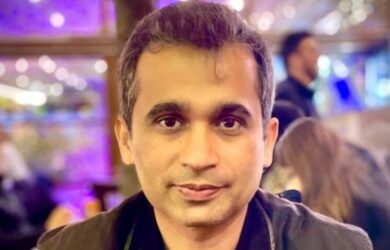Tiffany Bogich’s research into where the next infectious disease to be passed from animals to humans will come from has already brought her co-authorship of an article in the leading science journal Nature.
The paper, Impacts of biodiversity and the emergence and transmission of infectious diseases, was published on 2 December. It reviews the evidence for whether declines in biodiversity affect the transmission of infectious diseases. It concludes that “preserving intact ecosystems and their biodiversity should generally reduce the prevalence of infectious diseases”.
Tiffany’s collaboration on the paper came through her work with the EcoHealth Alliance, a non-governmental organisation based in New York. The organisation is in the second year of a five-year funded USAID project which is trying to develop and improve global-scale risk models to better predict where the next zoonotic disease will come from. It is also working on the ground to improve capacity in developing countries where this risk is thought to be greatest. Surveillance for new pathogens is currently being conducted in approximately 24 countries, with a focus on potential diseases coming from bats, rodents and primates.
The modeling work uses the same global-scale approach as her PhD work, which looked at how to best predict animal extinction based on global changes in land use.
Tiffany has been interested in zoology since childhood, and has her mum and grandmother to thank for encouraging her to explore the backyard and allowing various small critters into the house for closer examination. Born in Michigan, she describes herself as “an oddball“ in her family for her interest in zoology and academia. She says her interest in natural sciences was sparked by years spent at summer camps, beginning when she was just six.
However, it was her undergraduate years at Pennsylvania State University which shaped her career. She chose to study maths at undergraduate level in 2001, but she made contact with a biology professor, Katriona Shea, who took her under her wing and gave her the standard Ecology textbook by Begon, Harper, and Townsend, to read.
Despite her interest, the professor advised her to continue with her maths undergraduate course, rather than jumping into biology straight away. Her college at Penn State, however, allowed her to simultaneously study a masters course while completing her undergraduate course. So, in her second year she started a masters course in ecology. As part of a field course during her final year at Penn State, she travelled out of the US for the first time to South Africa where she looked at the human side of ecology and conservation. She interviewed residents of a small fishing settlement in Cape Town that were struggling to survive because of the lack of viable livelihood opportunities. Although apartheid had ended, small village fisherman were still unable to get legal rights to fish in what is now a threatened marine area. Conservation issues had to be balanced against economic and community ones. “It was eye-opening and gave me my first taste of travelling outside my country. I got the bug,” she says.
She finished her masters in 2006 and applied to Cambridge, encouraged by one of her mentors at Penn State, Bryan Grenfell, who was formerly a professor at Cambridge.
“Cambridge’s zoology department has a really good reputation and there are a high number of internationally known, non-profit conservation groups in Cambridge which the Conservation Science Group at Cambridge is linked to,” she says.
She enjoyed her interview for the Gates scholarship, although she says it was nerve-wracking. She scheduled a trip to visit Cambridge and her future supervisor immediately following her interview and was all the more excited to receive the news the morning she was to meet her PhD supervisor. After being awarded a scholarship, she began her PhD in Zoology at Cambridge in 2006. She says being part of the Gates scholarship network helped her settle in and provided her with her first friendships in the UK.
At Cambridge she was very active in her department, including the various seminar series, happy hours, and sports teams. She also started to play cricket while at Cambridge, and went on to play for the University, earning a half blue in 2005 and for the local club and county teams. She is also a keen rugby player, having started the sport at Penn State University and continued with the University blues team at Cambridge.
She graduated from Cambridge in October after extensive fieldwork in New Zealand and is now writing up her work for submission in academic journals. She took up her research post with the EcoHealth Alliance in January 2010 and is also linked with Columbia University where she is supervising students and is a visiting fellow with the Zoological Society in London.
Her article in Nature promises to be the first of many.












